Ascosphaera apis is a fungal pathogen of honey bees (Apis mellifera) that has been a significant contributor to Colony Collapse Disorder (CCD), a phenomenon that results in the death of a honey bee colony. CCD has been responsible for a significant decline in honey bee populations around the world, and has been attributed to a number of factors, including pesticide use, subpar farming practices, parasitic insects, and pathogen insults.
In order to effectively test antifungal treatments on honey bees, there needs to be a tight control of the hive conditions, ideally in a laboratory setting. This enables known variables to be controlled and modulated and for environmental variability to be minimized that may confound treatment methodologies and reduce the significance of results. As such, our goal with this project was to maintain ideal hive conditions in a controlled environmental chamber in order to determine if we could keep honey bees alive in a laboratory setting, for potential future pathogen studies. This chamber was dubbed the BeeSL-2 (see BSL-2).

A 1 square-foot aluminum box was fabricated, enabling it to be autoclaved to destroy all potential microbial contaminants and pathogens. A Raspberry Pi and Mycodo was used for the environmental control, utilizing a DHT22 sensor to measure temperature and humidity, a K30 CO2 sensor to measure carbon dioxide, and a humidifier, heating mat, and exhaust fan to modulate the measured environmental conditions.
European honey bees were sourced from a local apiary and placed in a 4 °C refrigerator for 15 minutes to reduce their metabolism, reducing their stress and lowering the risk during transfer to the environmental chamber. As seen in the videos, below, the bees were fed raw honey comb (top), pollen (bottom-center), water (bottom-left), and 50% w/v glucose solution (bottom-right).
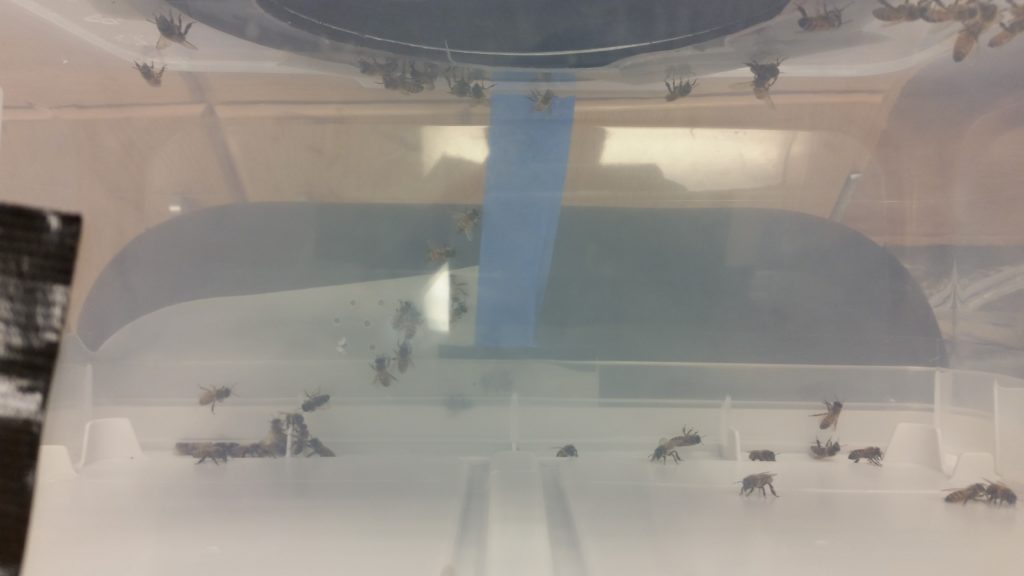
Mycodo was configured with PID controllers to couple the sensors with the output devices, allowing a tight control of humidity at 75 %, temperature at 30 °C, and CO2 below 1200 ppmv.
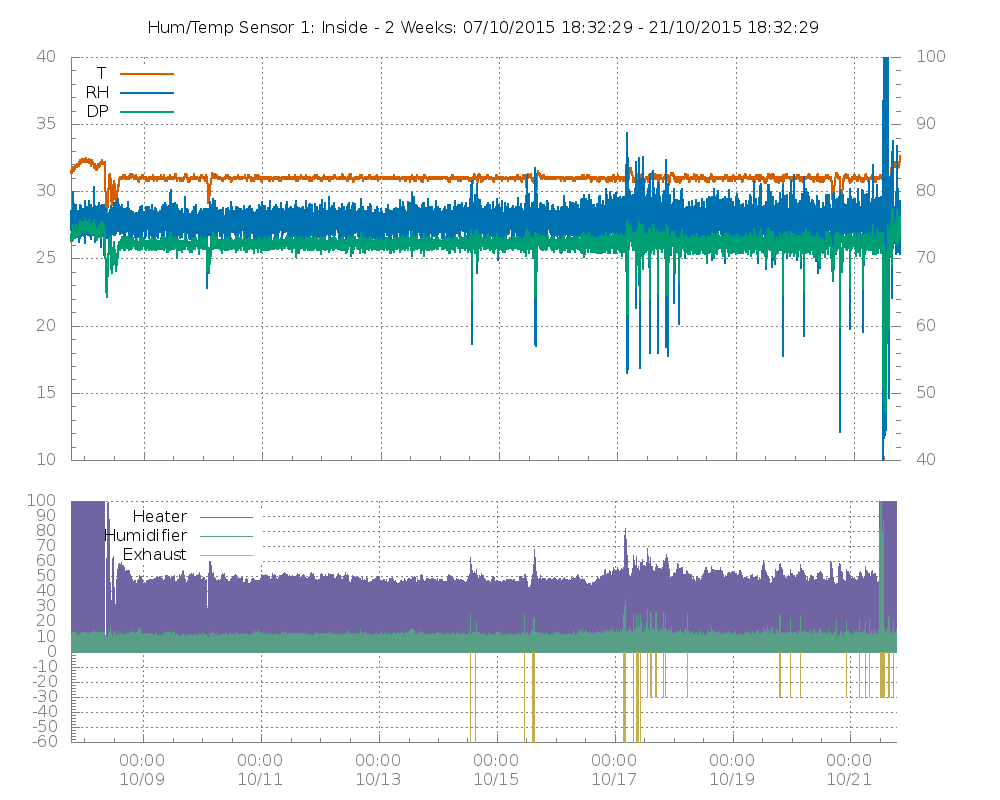
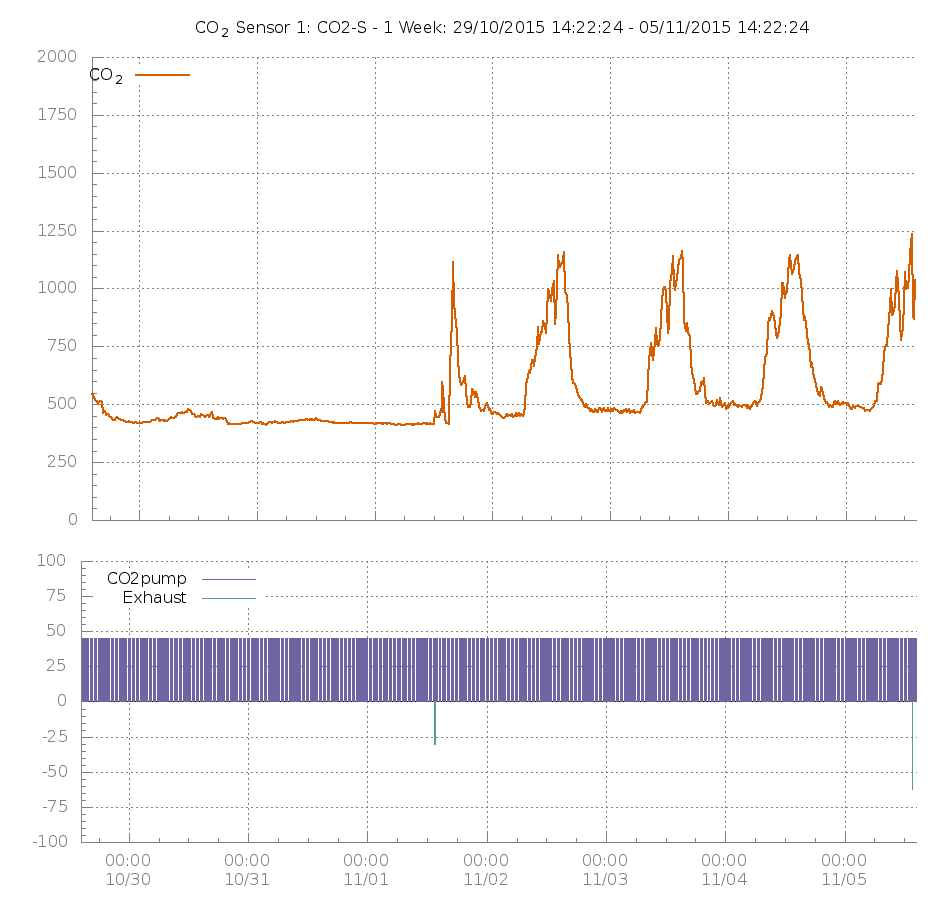
If you’re at all familiar with Mycodo, you’ll notice these graphs are incredibly archaic compared to the current version. Nonetheless, the principles of PID control have changed very little from this early version of the software. In fact, during this time was when Mycodo was undergoing experimental changes to the graphing system. Here’s one such version that was tested while the Bee experiment was underway.
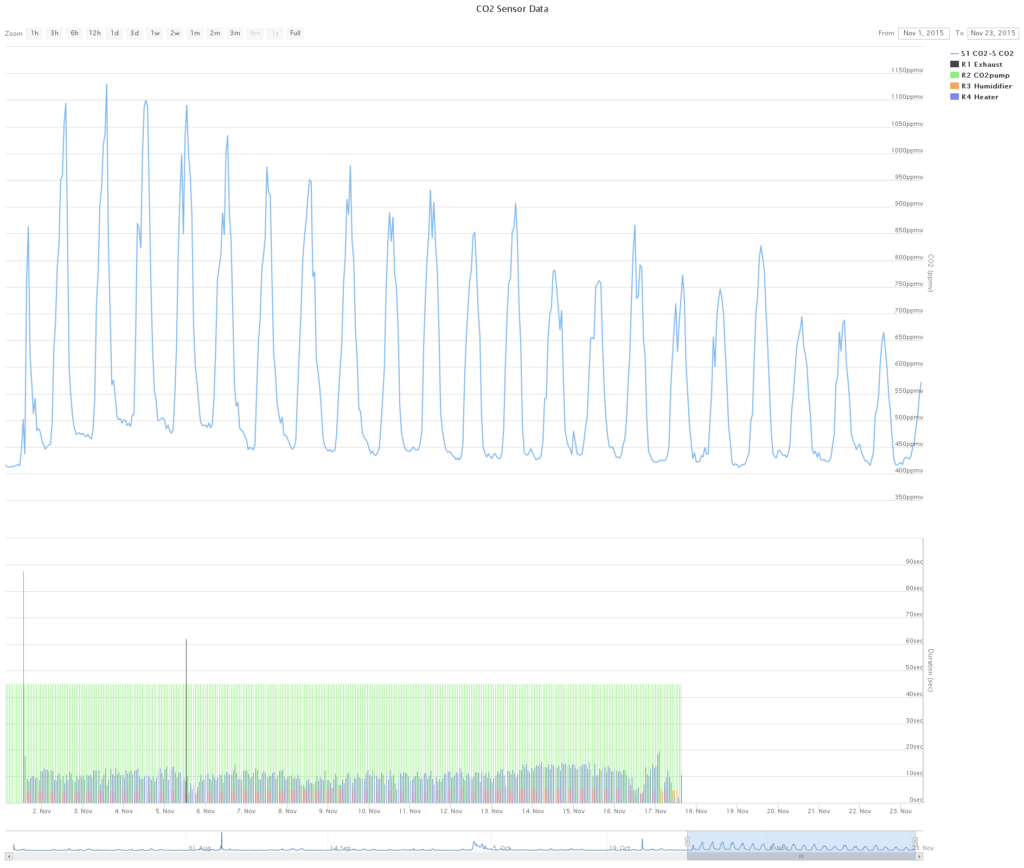
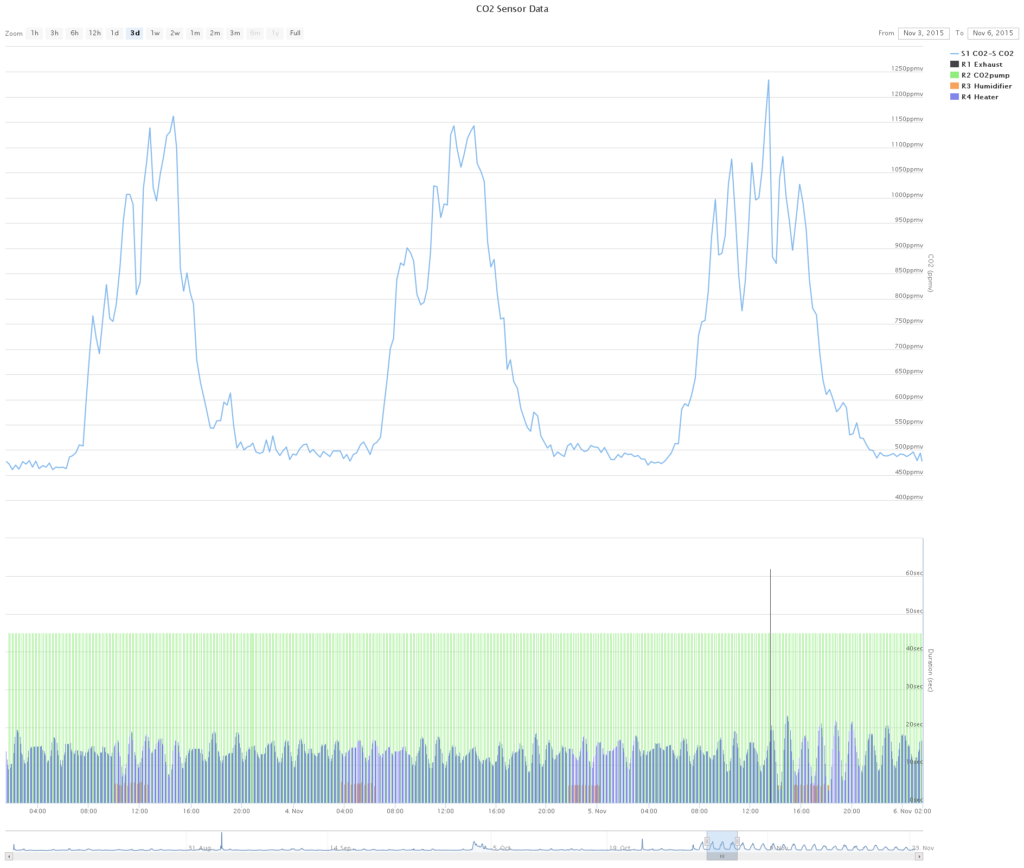
The two timelapse videos below were filmed inside of the environmental chamber, over the course of several days. Each timelapse was created from 1 frame that was captured every 2 minutes to produce the 30 frame-per-second videos. Infrared light was chosen as the wavelength to illuminate during each photo capture in order to reduce disturbance to the bees.
An interesting phenomenon witnessed was even in the absence of light cues, bee activity continued to revolve around a strict schedule that followed when sunrise and sunset would have occurred. Watch the timestamp in the top-right of each video and notice when activity increases and decreases.
Dead bees were removed from the chamber each day to reduce the stress of the colony, as this is a normal activity performed by the worker bees. The vast majority of bees survived for an entire month, prior to them all dying, which is more than enough time to perform an infectivity and treatment study. This was a project I developed in collaboration with another fellow PhD student, John Neville, however no follow-up study was performed, as this was outside the main scope of both of our dissertations.
